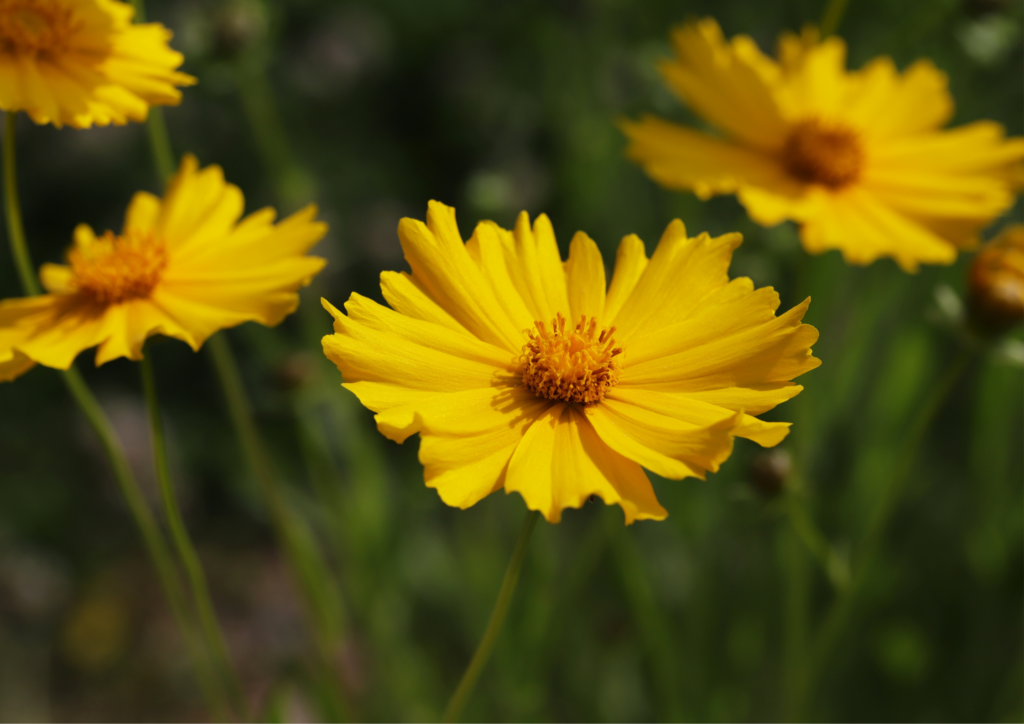If you have a garden that receives full sun throughout the day, consider adding sun-loving flowers to your outdoor space. Even with their resilient nature, flowers need proper light conditions to grow and thrive—and some flowers require more sunlight than others.
Once established, sun-loving flowers will make your garden more colorful and lively during the hottest months. Planting these flowers also reduces the need for constant shade management, helping you save time and effort in maintaining your garden.
These are the best flowers for all-day sun that will flourish even in the brightest conditions.
Zinnias
Certain zinnias provide a prolonged floral display, blooming from late spring until the first frost. They are available in a variety of hues, including as orange, yellow, pink, red, and white. Zinnias are a fantastic plant for pollinator gardens since they draw butterflies and bees. These flowers do best in locations that receive at least six hours of direct sunlight per day, and they prefer full sunlight. Although they require regular watering, they can withstand mild drought conditions.
Sunflowers
Sunflowers are a seasonal highlight because they usually bloom in the summer and persist into early fall. They should ideally be exposed to direct sunshine for six hours or more every day. Although they may survive a variety of soil conditions, these blooms favor well-drained soil. Furthermore, sunflowers are annuals, which means that they go through the whole life cycle—from germination to seed production—in a single growing season.
Lantanas
Lantanas thrive in bright circumstances and are best suited to full sunlight. They exhibit a multitude of color variations, such as pink, purple, orange, yellow, and red tones. In colder climates, these plants are annuals, but in warmer hardiness zones, they may be perennials. Additionally enticing to pollinators, lantanas attract butterflies and bees to the yard. They are a popular option for gardeners because of their low maintenance requirements and modest watering requirements.
Marigolds
Marigolds bloom in a range of colors, such as orange, red, and yellow. They usually provide a long blooming display from early summer until the first frost. These plants need at least six hours of direct sunlight per day to flourish. Although they may grow in a variety of soil types, marigolds prefer well-drained soil. They also need to be replanted every year since they are annuals, which means they finish their life cycle in a single growing season.
Lavender
Lavender is a perennial that grows best in sunny gardens with full sun and well-drained soil. After it is established, it just needs the occasional watering, especially during dry spells. Flowers that draw pollinators like bees and butterflies usually bloom from late spring to early summer. Lavender, which is well-known for its fragrant blossoms, has a nice aroma that deters rabbits and deer, two common pests, from entering gardens.
Salvia
Plants in the varied genus Salvia come in a wide range of colors, from pink and red to blue and purple. Salvia is suitable for zones 4 through 10, and it usually loves full sun exposure and well-drained soil. Once established, this drought-tolerant plant only requires occasional watering and has relatively low maintenance requirements. Salvia is also a great addition to landscapes that support nature because it is known to attract pollinators like bees and butterflies.
Geraniums
Geraniums are best grown in sunny areas with at least six hours of sunlight every day. These plants have a great variety of colors, including pinks, purples, reds, and whites. They can withstand brief periods of drought, but they need frequent watering and well-draining soil to thrive. In hardiness zones 10–11, geraniums are mostly perennials; but, in colder regions, they are frequently planted as annuals.
Petunias
Because they can grow in direct sunshine, petunias are perfect for sunny gardens. They are available in a variety of hues, such as pink, purple, red, and white. These blooms offer prolonged visual pleasure throughout the growing season; they usually bloom from April until the first frost. Petunias are actually perennials in hardiness zones 9 through 11, despite being grown as annuals most of the time. They need regular watering, but they don’t appreciate too damp soil; instead, they thrive best in well-drained environments.
Coreopsis
The colorful blossoms of the broad genus Coreopsis come in a variety of colors, such as yellow, pink, and red. These flowers need at least six to eight hours of direct sunlight per day to flourish. Perennials, the majority of Coreopsis cultivars exhibit resilience in USDA hardiness zones 4 through 9. Interestingly, they draw a variety of pollinators, such butterflies and bees, which increases the biodiversity of gardens. Their moisture requirements are moderate, and once established, they thrive with sporadic watering.
Snapdragons
Snapdragons are well-known for their wide spectrum of colors, which include purples, yellows, and reds as well as pinks and purples. These flowers, which usually bloom from spring to fall, need direct sunlight to thrive to their maximum potential. Well-drained soil is ideal for their growth. Snapdragons attract pollinators such as bees and butterflies, making them excellent for gardens focused on supporting local biodiversity. These plants are also typically resistant to rabbits and deer, which increases their allure as low-maintenance options.
Bee Balm
Perennial bee balm thrives in full sun and has a long blooming season that lasts from mid-summer to early fall. It is a great option for pollinator gardens since it draws pollinators like bees and butterflies and is available in red, pink, purple, and white. For optimal growth, this plant needs wet, well-drained soil and moderate irrigation. Since bee balm rarely succumbs to deer or rabbit damage, gardeners can consider it low-maintenance.













There’s a wealth of information on this site at your finger tips. I’ve learned a lot more here than anywhere else regarding plants. Judging from my experience here, this is the winner above all others.